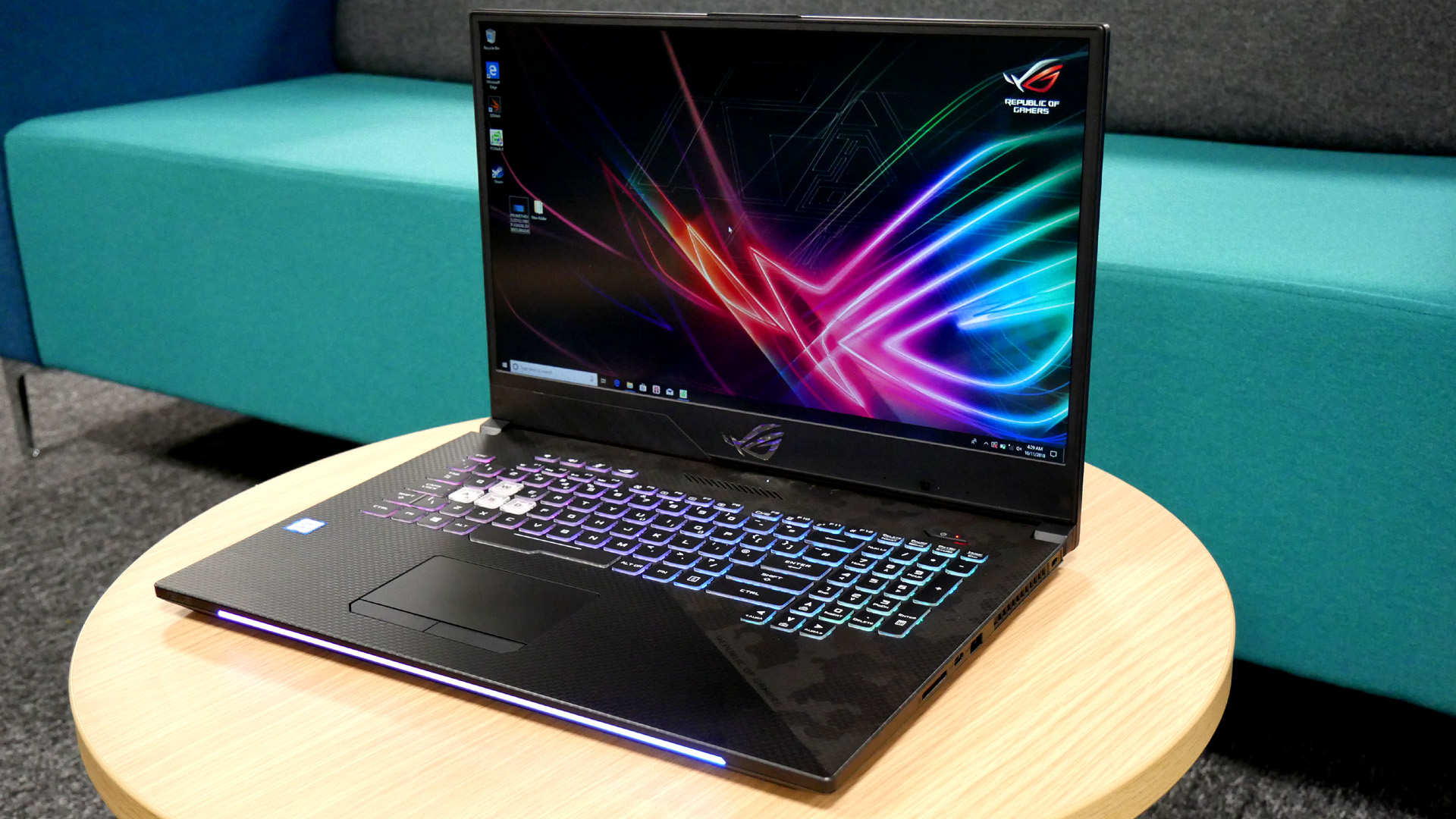Why you can trust TechRadar
Here's how the Asus ROG Strix Scar II GL704GM performed in our suite of benchmark tests:
3DMark: Sky Diver: 29,504; Fire Strike: 10,793; Time Spy: N/A
Cinebench CPU: 1,040 points; Graphics: 110 fps
GeekBench: 5,065 (single-core); 22,800 (multi-core)
PCMark 8 (Home Test): 4,211 points
PCMark 8 Battery Life: 2 hours and 56 minutes
Battery Life (techradar movie test): 3 hours and 24 minutes
Total War: Warhammer 2 (1080p, Ultra): 40 fps; (1080p, Low): 99 fps
Middle Earth: Shadow of War (1080p, Ultra): 55 fps; (1080p, Low): 118 fps
Component matching usually makes or breaks a gaming laptop. By that we mean items like the CPU, graphics chip and screen. It’s no good, for instance, pairing an ultra high-resolution screen with a middling GPU. In that regard, the Scar II is nicely balanced.
Its 1080p LCD panel isn’t very high resolution. Indeed, many laptops offer screens with four times the resolution. But 1080p is a resolution the Scar’s Nvidia GeForce GTX 1060 graphics chip can cope with. As our benchmarks show, even at the very highest settings in games like Total War: Warhammer 2 and Middle Earth: Shadow of War, this laptop outputs playable frame rates.
That said, those frame rates are only just playable – there’s little to no performance headroom to spare. That has two implications. Firstly, this laptop doesn’t come with much by way of future proofing for more demanding games down the road.
Secondly, when you’re playing the latest games, its 144Hz refresh rate capability is essentially academic. The graphics subsystem isn’t capable of playing the latest games at high details while at this refresh rate.

One obvious solution would be to specify the optional upgrade to Nvidia’s GeForce GTX 1070 graphics, which is a significantly more powerful GPU. It would give this laptop much more headroom and allow you to feel the benefit of that 144Hz refresh more often in games.
The GTX 1070 graphics would also help justify the Scar’s beefier proportions versus the likes of Gigabyte’s Sabre 17. Inevitably, the upgraded graphics will also cost several hundred more, whether you measure that in pounds or dollars.
The Asus ROG Strix Scar II GL704GM’s components are all pretty familiar. The hexa-core Intel Core i7-8750H CPU, for instance, will be plenty for most if not all tasks. The Nvidia 1060 graphics, as we’ve discussed, gets the job done adequately in today’s games, but doesn’t leave much room for more demanding games down the road.
Sign up for breaking news, reviews, opinion, top tech deals, and more.
In short, there are no surprises in our benchmarks.
For the record, its SSD is a 256GB M.2 unit and delivers decent performance, cranking out around 1GB/s of peak transfers and and random access reads and writes of around 50MB/s and 100MB/s respectively. Overall, this is a quick and responsive laptop.
As for battery life, it probably depends on your expectations. Three and a half hours of video isn’t too shabby by the standards of big desktop replacement laptops. But it’s not much use for a long plane flight or operating away from an outlet all day.

Verdict
The Asus ROG Strix Scar II GL704GM is undoubtedly a high quality bit of kit. The chassis is a very solid bit of kit and its 17.3-inch 1080p IPS display, complete with 144Hz refresh, is certainly a highlight, while the thin-bezel design helps keep a check on overall proportions.
Overall performance, likewise, is certainly strong. Our only reservation is that the Scar II is unambiguously pitched as a gaming laptop. Make no mistake, it’s good for playing games right out of the box. It’s just the lack of headroom is a little worrisome. It won’t be long before games appear that force you to trade off visual detail with frame rates. More to the point, the GTX 1060 graphics doesn’t have the grunt today to make the most of the 144Hz refresh capability.
As with any gaming laptop, the graphics subsystem is such a critical aspect for gaming performance and the GeForce GTX 1060 isn’t the very best fit. It is possible to buy a laptop with the faster GTX 1070 at this price point, albeit without quite the same physical quality and polish. On the other hand, if you’re really sold on the Scar II’s design and overall feature set, we’d advise spending a little more on the upgraded graphics options and getting that GeForce GTX 1070 under the hood. You’ll be glad you did in the long run.
Technology and cars. Increasingly the twain shall meet. Which is handy, because Jeremy (Twitter) is addicted to both. Long-time tech journalist, former editor of iCar magazine and incumbent car guru for T3 magazine, Jeremy reckons in-car technology is about to go thermonuclear. No, not exploding cars. That would be silly. And dangerous. But rather an explosive period of unprecedented innovation. Enjoy the ride.
